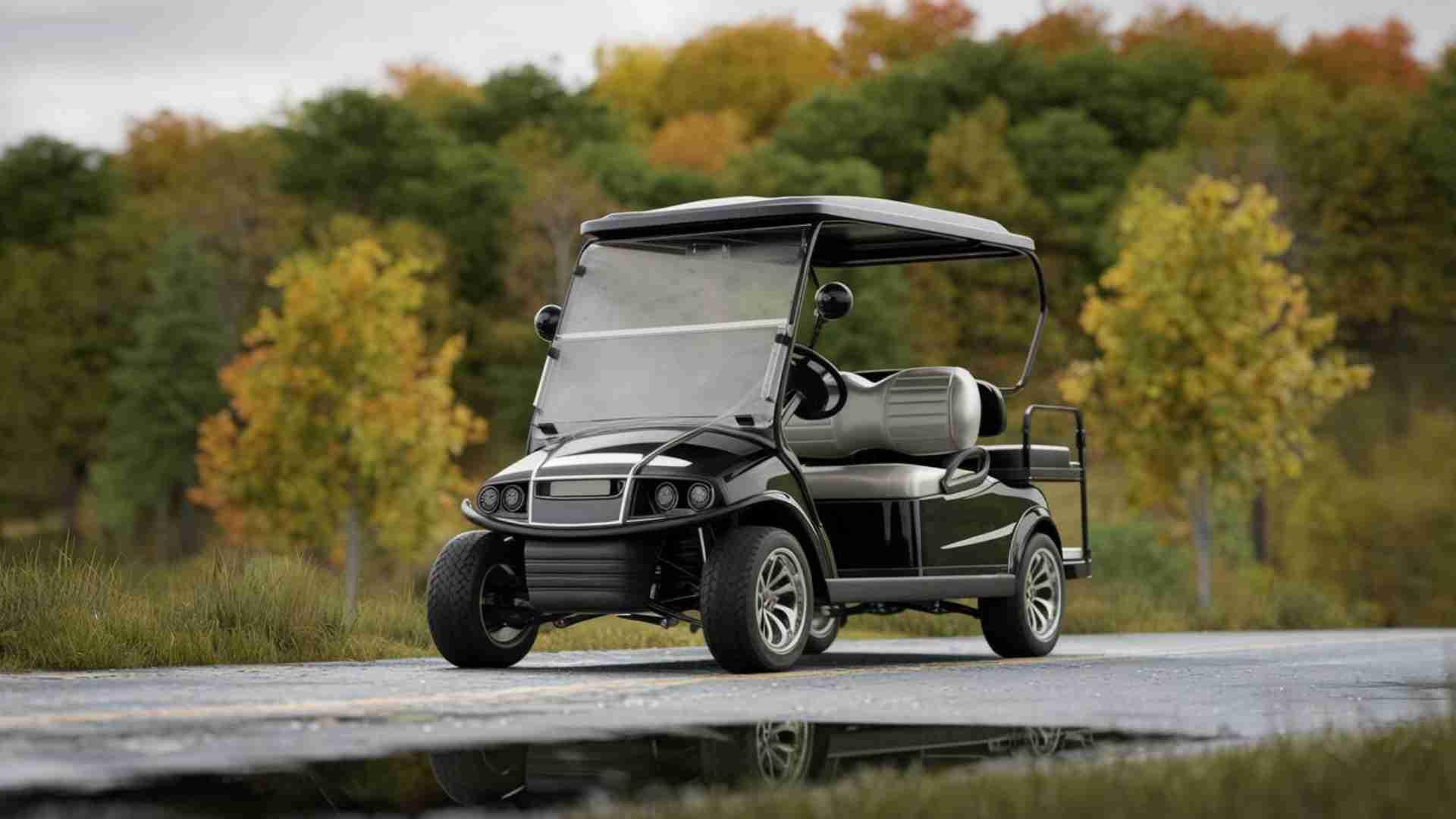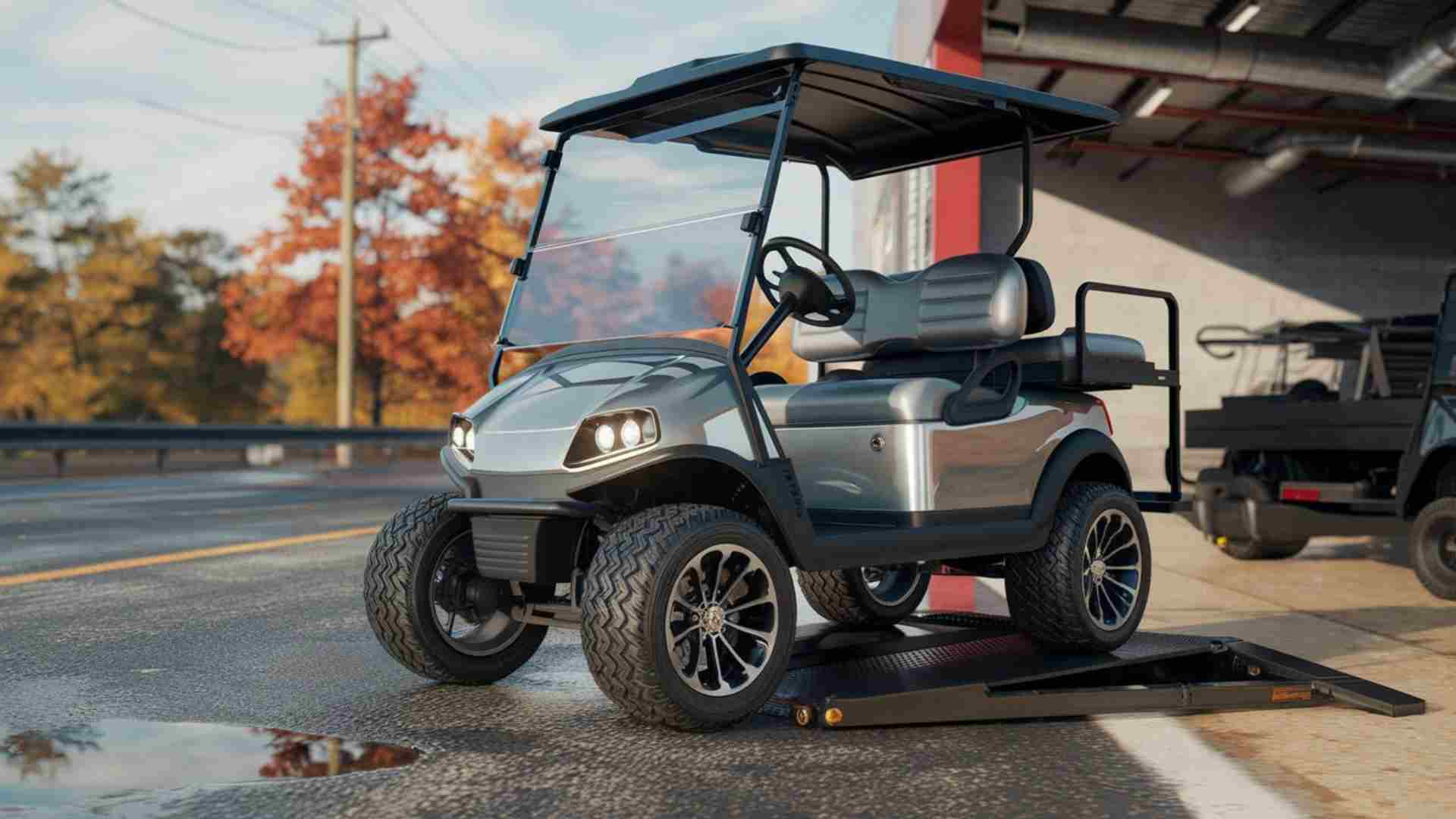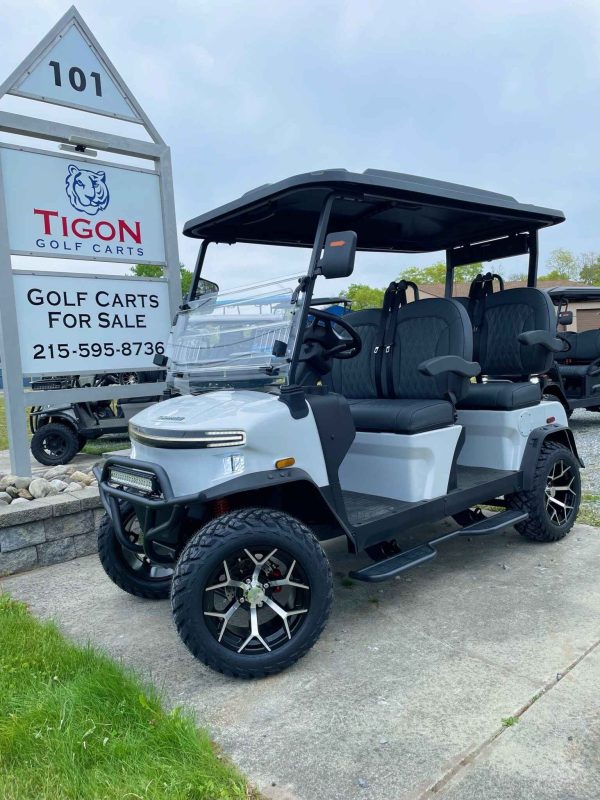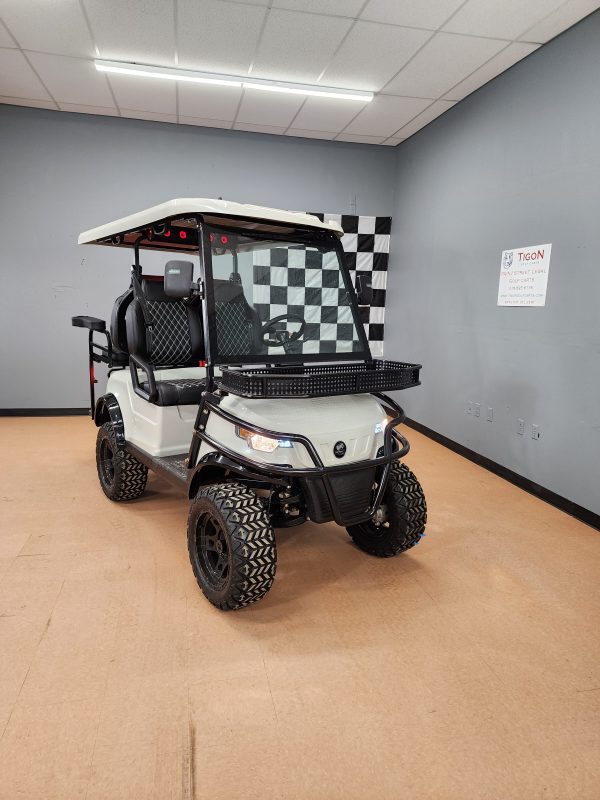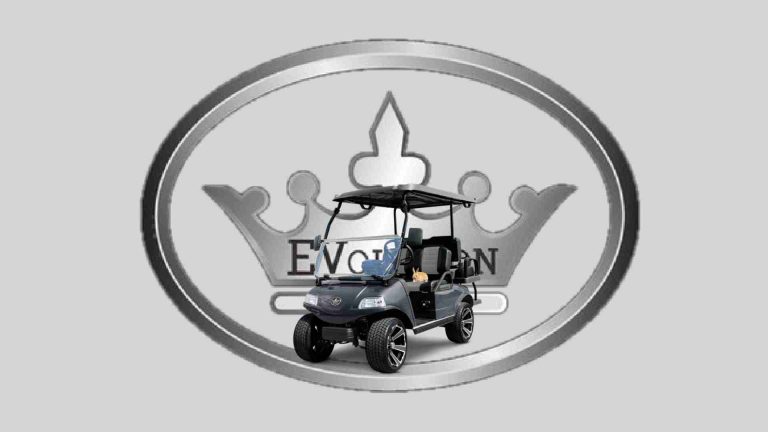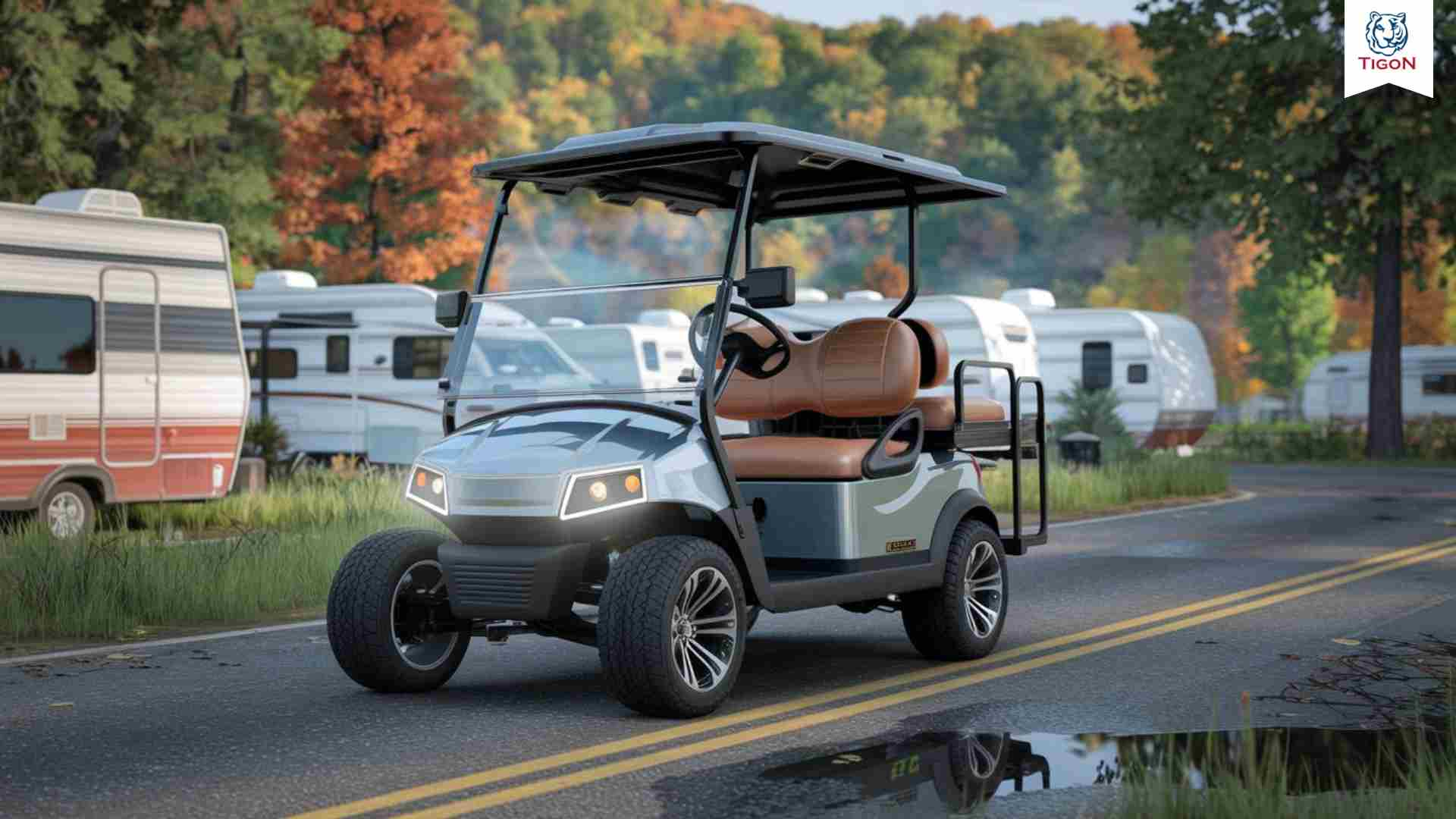
Cruising in Style: Our Top Picks for Street Legal Golf Carts
Golf Cart Regulations
In our quest to make golf carts street legal, it’s essential to get acquainted with the rules and regulations that govern their usage. We’ll explore the general requirements that apply broadly and then delve into the specific variations that differ from one state or locality to another.
Understanding Street Legal Requirements
For a golf cart to be deemed street legal, it must comply with specific criteria laid out by local and state authorities. These requirements ensure that the golf cart is safe for use on public roads. Here are some general guidelines:
- Speed Limits: Street legal golf carts generally need to have a maximum speed limited to between 20-25 miles per hour (Tigon Golf Carts).
- Safety Equipment: Essential safety features typically include headlamps, turn signals, tail lamps, brake lights, rearview mirrors, seat belts, and a vehicle identification number (VIN). For more details, visit our guide on must-have safety accessories.
- Registration and Inspection: The golf cart may need to be registered, titled, and pass a safety inspection conducted by local law enforcement before it can be used on public roads. See our guide on Registering Your Street Legal Golf Cart for more details.
| Requirement | Description |
|---|---|
| Speed Limit | 20-25 mph |
| Safety Equipment | Headlamps, turn signals, tail lamps, brake lights, rearview mirrors, seat belts, VIN |
| Registration | Must be registered and titled |
| Inspection | Safety inspection by local law enforcement |
State and Local Variances
Regulations for street legal golf carts can vary significantly from one state to another, and even between municipalities within the same state. Here’s a closer look at some state-specific requirements:
Street Legal Requirements
Turning a golf cart into a street legal vehicle requires several steps and compliance with specific regulations:
- Registration and Titling: The golf cart must be registered and titled.
- Inspection: It must pass an inspection by local law enforcement.
- Road Usage: It can only be operated on secondary highways or streets with a speed limit of 35 mph or less (Tigon Golf Carts).
- Driver Age and Licensing: The operator must be at least 16 years old and possess a valid driver’s license.
- Required Equipment: The golf cart must meet the Low Speed Vehicle (LSV) standards, including the presence of headlamps, turn signals, tail lamps, seat belts, and a VIN.
| Requirement | Description |
|---|---|
| Registration | Must be registered and titled |
| Inspection | Safety inspection by local law enforcement |
| Road Usage | Secondary highways, speed limit ≤ 35 mph |
| Driver Age | Minimum 16 years old, valid driver’s license |
| Required Equipment | Headlamps, turn signals, tail lamps, seat belts, VIN (Tigon Golf Carts) |
Understanding these individual variances is crucial for anyone looking to make their golf cart street legal. It’s always a good idea to check with local and state authorities for the most up-to-date regulations and guidelines. For more detailed information on various local regulations, visit our golf cart laws page.
By familiarizing yourself with these requirements, you can ensure your golf cart meets all necessary standards for safe and legal operation on public roads. For additional insights and tips, check out our articles on golf cart safety tips and golf cart maintenance.
Safety Considerations
Ensuring safety when operating street legal golf carts is paramount. Understanding the necessary components and legal requirements helps keep both operators and pedestrians safe.
Brakes and Steering Systems
For a golf cart to be deemed street legal, it must come equipped with functioning brakes and steering systems. Most road-ready golf carts include these important features straight from the factory (Royal EV). The brakes must be capable of bringing the cart to a complete stop under various conditions, while the steering systems should allow for reliable maneuverability. Here’s a look at some important safety aspects:
| Safety Feature | Requirements |
|---|---|
| Braking System | Must be able to stop the vehicle safely |
| Steering System | Reliable and easy to maneuver |
| Registration and Inspection | Varies by state, local law enforcement may need to inspect (Royal EV) |
For more detailed guidance on maintaining these systems, check out our guide on golf cart maintenance.
Operator Age and Licensing
Age and licensing requirements for operating street legal golf carts can vary widely across the United States. For instance, in Ohio, golf cart operators must be at least 16 years old and possess a valid driver’s license (Tigon Golf Carts). Additionally, golf carts must be registered, titled, and insured to be legally driven on roads. Below are some key requirements:
| State | Minimum Age | Driver’s License | Registration | Licensing Authority |
|---|---|---|---|---|
| Pennsylvania | 16 | Yes | Required | Local Law Enforcement (Tigon Golf Carts) |
| Other States | Varies | May vary | May be required | Varies |
Understanding and complying with these requirements is crucial for safe and legal operation. Please refer to our page on golf cart laws for specific details by state or municipality.
These considerations are just a part of ensuring safety when using street legal golf carts. It’s vital to always stay informed about the latest regulations and best practices. Feel free to dive into our article on golf cart safety tips for further advice on keeping your rides secure.
Modifying Golf Cart Speed
Achieving optimal performance in street legal golf carts involves various modifications. One of the most effective approaches is to enhance the speed capabilities of your cart. Here we explore two significant modifications: upgrading batteries for enhanced performance and motor and controller enhancements.
Upgrading Batteries for Performance
High-performance batteries are the backbone of any efficient electric vehicle, and this holds true for golf carts as well. By upgrading to advanced battery models, the speed and overall performance of your golf cart can be significantly improved. Notable models like the Denago EV Rover XL, The Swift EV Mach 6, and EVolution D5-Maverick 4, all demonstrate how advanced battery technology can enhance the driving experience of a golf cart (Tigon Golf Carts).
Benefits of High-Performance Batteries:
- Increased Speed: Newer battery models provide the necessary power boost for higher speeds.
- Extended Range: Enhanced battery technology often translates to longer driving ranges.
- Efficiency: Improved battery efficiency results in better energy management and fewer recharges.
| Battery Model | Increase in Speed (%) | Range (miles) |
|---|---|---|
| Standard Lead-Acid | Manufacturer Specs | 20 |
| High-Performance Lithium | 20% | 25 |
Motor and Controller Enhancements
Another crucial modification for street legal golf carts is upgrading the motor and controller. This modification can result in substantial improvements in speed and acceleration. By optimizing the motor and controller, you can fine-tune your cart’s performance to your specific needs.
Key Enhancements:
- Motor Upgrades: Replacing the motor with a more powerful version can significantly increase the cart’s top speed and torque.
- Controller Optimization: Adjusting the controller settings to better manage the power flow can lead to smoother and faster accelerations.
| Enhancement | Speed Increase (%) | Torque Improvement |
|---|---|---|
| Standard Motor | Manufacturer Specs | Manufacturer Specs |
| High-Performance Motor | 30% | 35% |
| Standard Controller | Manufacturer Specs | Manufacturer Specs |
| Optimized Controller | 15% | 20% |
Modifying your golf cart’s speed through battery upgrades and motor and controller enhancements can make a noticeable difference in your driving experience. However, it’s vital to prioritize safety and adhere to golf cart laws and golf cart safety tips to ensure that your modifications are both effective and compliant with regulations. Remember, maintaining a balance between performance and safety is key to cruising in style.
Street Legal Golf Cart Features
When making a golf cart street legal, there are several key features and modifications that must be considered. These elements not only ensure safety but also compliance with local regulations.
Lighting and Safety Equipment
For a golf cart to be deemed road-ready, it must be equipped with specific lighting and safety gear. These elements are critical in ensuring visibility and protection while driving.
Essential Lighting and Equipment:
- Headlights: Necessary for nighttime and low-light conditions.
- Taillights and Brake Lights: Indicate the vehicle’s presence and braking actions to other drivers.
- Turn Signals: Crucial for signaling lane changes or turns.
- Side Reflectors: Enhance visibility from different angles.
- Seat Belts: Mandatory for the safety of the driver and passengers.
According to Royal EV, most street-legal golf carts come with these safety features from the factory. For a complete guide on maintaining these features, check our golf cart maintenance page.
Commercial Use Specifications
Golf carts used for commercial purposes need additional specifications to comply with street legal standards. This ensures they are safe and functional for handling various tasks in different environments.
Commercial-Grade Specifications:
- Heavy-Duty Brakes: Essential for handling increased load and frequent stops (Denago EV).
- Enhanced Steering Systems: For better maneuverability in tight or crowded spaces.
- Improved Suspension Systems: Offer greater stability and comfort, especially when transporting goods or multiple passengers.
| Feature | Requirement for Street Legal Use | Source |
|---|---|---|
| Seat Belts | Mandatory | Tigon Golf Carts |
| Headlights | Required for visibility | Tigon Golf Carts |
| Turn Signals | Needed for signaling | Tigon Golf Carts |
Local regulations can vary significantly, so it is important to consult specific golf cart laws in your area to ensure compliance.
To learn more about enhancing the aerodynamics of your golf cart for better performance, we have covered specific tips in our increasing golf cart speed section. For further safety tips, our golf cart safety tips article offers a comprehensive overview.
Increasing Golf Cart Speed
When it comes to making our street legal golf carts quicker, there are a couple of key features we can tweak to achieve better performance. Here, we’ll look at adjusting the gear ratio and enhancing aerodynamics to boost speed.
Adjusting Gear Ratio
One major factor that influences the speed and acceleration of our electric golf carts is the gear ratio. By adjusting this ratio, we can optimize the cart for faster acceleration and higher top speeds. It’s important to choose a gear ratio compatible with the golf cart’s make and model to ensure efficiency and safety (Tigon Golf Carts).
Example Gear Ratios for Speed Increase:
| Gear Ratio | Speed Increase (%) |
|---|---|
| 10:1 | 20% |
| 12:1 | 30% |
| 14:1 | 40% |
Enhancing Aerodynamics
Improving the aerodynamics of our golf carts can significantly reduce drag, making them more streamlined and allowing for higher speeds. Here are some aerodynamic modifications we can make:
- Front Air Dam: Adds a barrier at the front to reduce air resistance.
- Rear Spoiler: Helps to manage airflow and decrease drag.
- Aerodynamic Wheels: Wheels designed for better airflow efficiency.
These modifications don’t just improve speed; they also enhance energy efficiency (Tigon Golf Carts).
For more tips on optimizing your street legal golf cart, check our articles on neighborhood electric vehicles, golf cart maintenance, and golf cart safety tips.
Market Growth and Safety
Eco-Friendly Transport Options
In recent years, the market for street-legal golf carts has been growing significantly. Currently valued at nearly $2 billion in the US, it is expected to exceed $3 billion by 2032. This growth is driven by the increasing popularity of these eco-friendly alternatives to traditional vehicles (Tigon Golf Carts).
Street-legal golf carts, or neighborhood electric vehicles (NEVs), are often electrically powered, which helps reduce carbon emissions. This makes them an excellent choice for environmentally conscious individuals and businesses. In commercial settings, street-legal golf carts contribute to a reduction in the overall carbon footprint by offering sustainable transport solutions (Tigon EV Commercial-Use Golf Carts).
| Golf Cart Type | Power Source | Environmental Impact |
|---|---|---|
| Street-Legal Golf Carts | Electric | Low emissions, eco-friendly |
| Traditional Vehicles | Gasoline | High emissions, less sustainable |
For more about the benefits of street-legal golf carts as eco-friendly options, check out our section on neighborhood electric vehicles.
Regulations for Accident Prevention
As the market for street-legal golf carts continues to grow, so does the need for comprehensive regulations to ensure safety on the roads. Understanding and adhering to golf cart laws is essential for both manufacturers and users.
To minimize accidents, various regulations have been implemented. These include mandates for proper lighting, safety features, and clear operator age and licensing requirements. Adhering to these regulations can help reduce the risk of accidents and enhance overall safety. For additional safety tips, explore our golf cart safety tips.
Accident prevention regulations might include:
- Required safety equipment like seat belts, mirrors, and turn signals.
- Speed limits and designated areas for street-legal golf cart operation.
- Age and licensing requirements for operators.
Following these regulations helps ensure that street-legal golf carts remain a safe and viable eco-friendly transport option for everyone.
For more tips on maintaining your street-legal golf cart, visit our section on golf cart maintenance.
GET THE GOLF CART LSV AT THE RIGHT PRICE!
Tigon Golf Carts proudly offers 0% Vehicle Financing, making it easier than ever to own your dream golf cart. With flexible payment options and competitive rates, we ensure that Upgrading or Purchasing for the first time is not only exciting but also financially feasible for our customers, allowing you to hit the road in style without breaking the bank.
Share:
Golf Cart Events


